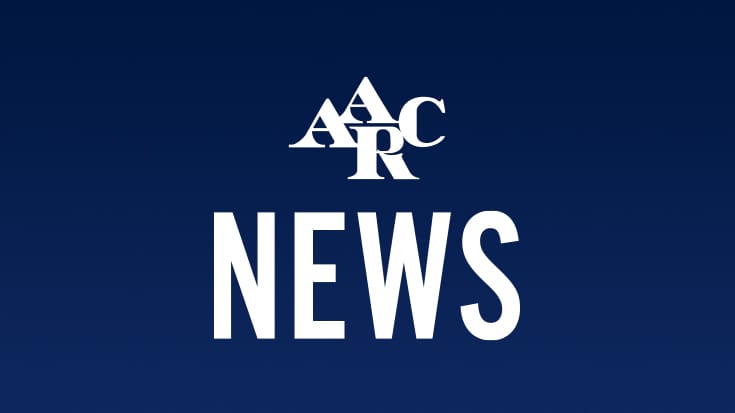
The AARC PACT will head to Washington, DC, on May 1 and next week we’ll be asking AARC members across the country to email their members of Congress in support of the key issue PACT representatives will be talking about: gaining support for pilot telehealth legislation that will focus solely on respiratory therapists to provide disease management services via telehealth to Medicare beneficiaries with COPD.
To get everyone ready to write those emails, we asked AARC Associate Executive Director for Advocacy and Government Affairs Anne Marie Hummel to answer five key questions about telehealth we know RTs are asking.
Can you briefly define what the government and other payers mean when they say “telehealth” or “telemedicine”?
The term “telemedicine” is often used interchangeably with “telehealth.” The most common form of telehealth is an interactive audio and video telecommunications system that allows real-time, face-to-face communication between a physician or other qualified practitioner located at one site and a patient who is located at a different site.
Other types of telehealth include remote patient monitoring and store-and-forward technology. Remote patient monitoring uses one or more home-based or mobile monitoring device, such as a peak flow meter, to wirelessly transmit vital sign data or other information as part of a patient’s plan of care for review and interpretation by a health care professional.
Store-and-forward technologies allow for electronic transmission of medical information such as digital images, documents, and videos through secure email transmissions to aid in diagnoses and medical consultations when video or face-to-face contact is not necessary.
How does the AARC envision the respiratory therapist being involved in the delivery of these services?
We believe respiratory therapists are uniquely qualified to provide telehealth services, given their understanding of respiratory disease states ranging from routine outpatient services to the most acute emergency care.
For example, respiratory therapists’ disease management skills are well-suited to telehealth services. Educating patients about their disease, teaching self-management skills, counseling patients on how to recognize the symptoms and triggers of their disease in order to minimize acute exacerbations, demonstrating proper inhaler techniques in order to improve medication adherence, and smoking cessation counseling are some of the telehealth services that could be provided.
Respiratory therapists are already delivering these services in some places around the country. At UC Davis, they are using telehealth to assist patients with neuromuscular disease. At Atrium Health, virtual respiratory therapists are offering critical care services to hospitals in remote locations.
A School Based Telehealth Program at the Medical University of South Carolina is using an RT to provide asthma education to school children in rural communities through virtual sessions.
A recent study involving the use of RTs to assess ventilated neonates and children in the ICU showed telehealth evaluations by RTs highly correlated with face-to-face evaluations for 10 of 14 aspects of standard bedside respiratory assessments.
Keep in mind, however, that it will be up to the Medicare program to determine which, or how many, respiratory services would be covered if telehealth legislation is passed that includes such services.
Why should the average RT who works in the hospital or other traditional setting care about telehealth and what it means for the future of health care?
Telehealth is becoming an integral part of the delivery of health care today and can offer new opportunities for respiratory therapists regardless of their workplace. This is especially important, as studies show that telehealth reduces hospital readmissions, improves quality of life, and reduces costs.
Advocating for RTs as telehealth providers enhances the profession and raises the stature of the RT in the eyes of all health care disciplines at a time when millions of new Medicare beneficiaries are being added to the rolls, when there is an ever-increasing emphasis on patients with multiple chronic conditions, including COPD and asthma, and when quality care and performance continue to be scrutinized by all payers.
What will have to happen in regards to legislation for the respiratory therapist to play a significant role in the delivery of telehealth services and why?
Because there is no specific Medicare benefit for respiratory therapy in the Medicare statute, recognizing the respiratory therapist as a “Medicare provider” has always been problematic when it comes to dealing with the Medicare program.
This is currently the case with telehealth, and that is why it is important for the AARC to continue to advocate for the RT to be recognized in the statute as a telehealth provider in order to expand the RT’s ability to deliver quality health care. Medicare provider coverage is currently limited to physicians, nurse practitioners, physician assistants, critical nurse specialists, certified registered nurse anesthetists, nurse-midwives, clinical psychologists, clinical social workers, and registered dietitians or nutrition professionals.
How will the AARC PACT be advocating for telehealth during the 2018 Capitol Hill Advocacy Day coming up on May 1?
We are excited this year to have the opportunity to gain support for pilot telehealth legislation that focuses solely on respiratory therapists providing disease management services to Medicare beneficiaries with COPD via telehealth. We have learned from meetings on the Hill that committees of jurisdiction are focusing on telehealth provisions that are narrow in scope with a lower price tag and our pilot is designed to meet those criteria.
Respiratory therapists are not currently covered as Medicare telehealth professionals. The proposed 3-year pilot would give us a chance to show the value of respiratory therapists in reducing costly emergency room visits and hospital admissions and readmissions by permitting the Centers for Medicare and Medicaid to collect data on the impact of health outcomes and costs associated with their services.
Together with three telehealth bills already introduced in Congress that include coverage of respiratory therapists and respiratory care telehealth services, getting our pilot proposal introduced would be the icing on the cake. It is because of our PACT representatives’ outstanding advocacy efforts both on Capitol Hill and on the home front that respiratory therapists have taken center stage in so many telehealth legislative initiatives.
Email Your Members of Congress
Join the AARConnect Telehealth Community
Email newsroom@aarc.org with questions or comments, we’d love to hear from you.














